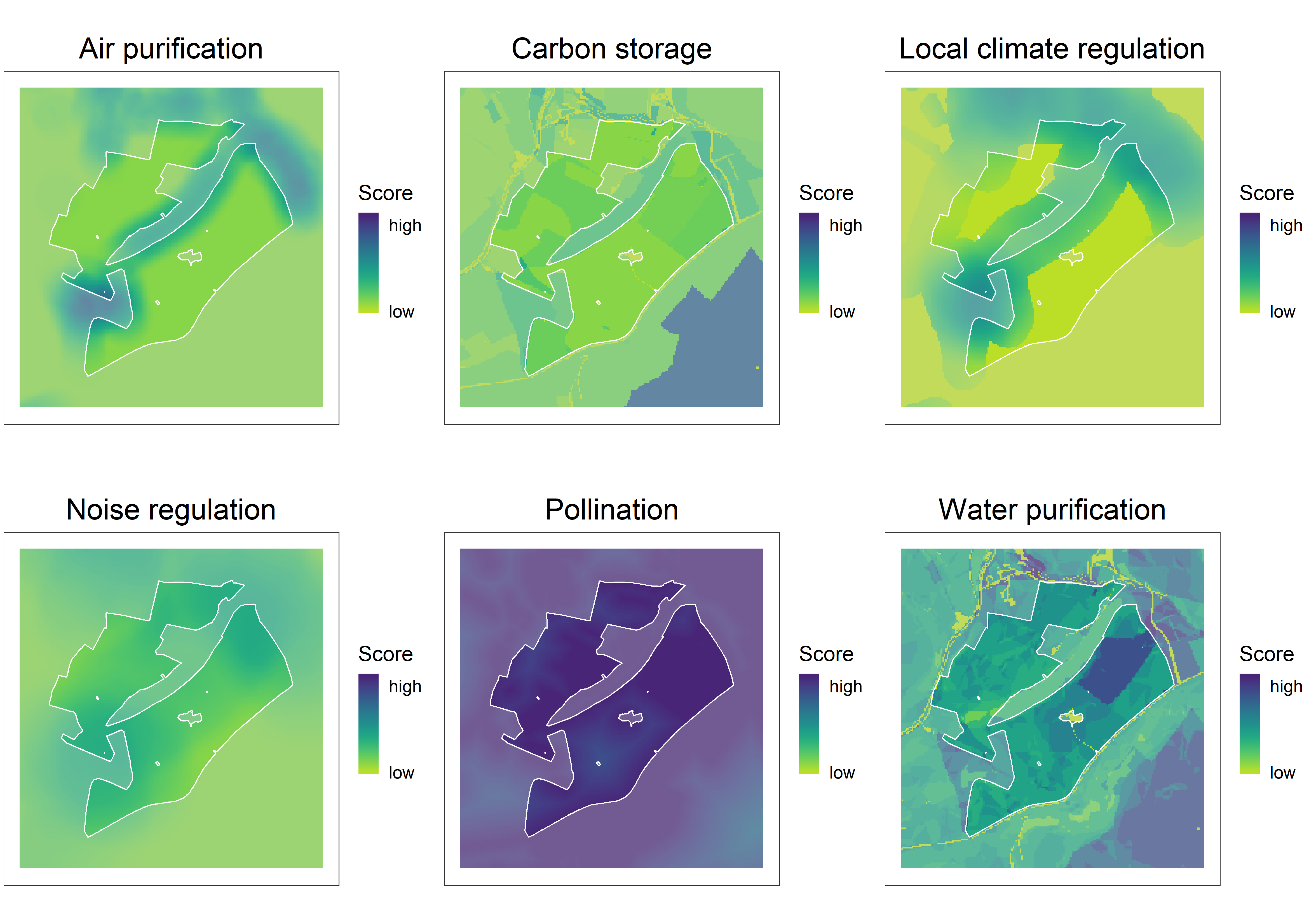Ecosystem services
EcoservR measures and maps a range of ecosystem services. For each service, the tool produces a capacity and a demand map. Capacity refers to the ability of the landscape to provide a service, and depends mostly on the type of habitats present and their spatial configuration. Demand is the need for a service, defined by a combination of regulatory (e.g. land use type) and societal (population density and health status) factors. Capacity and demand maps can be analysed together to identify opportunities and “pinch points”, to plan and deliver interventions where they are best suited and most needed. The current toolkit includes:
- Carbon storage: storage of carbon in above- and below-ground biomass, including the upper 30 cm of soil
- Air purification: removal of pollutants from the air by natural vegetation
- Water purification: interception of pollutants by natural vegetation before they can enter a water course
- Pollination: contribution of some insects to crop yield by carrying pollen across the landscape
- Local climate regulation: mitigation of “heat island” effects by natural features that absorb excess heat or provide shade
- Noise regulation: absorption of traffic noise by vegetation
- Accessible nature: opportunities for people to enjoy natural places around their everyday working and living space.
We are currently developing models to measure carbon sequestration, biodiversity, and flood risk mitigation.
 Example of capacity score maps for a farm holding in Cheshire
Example of capacity score maps for a farm holding in Cheshire